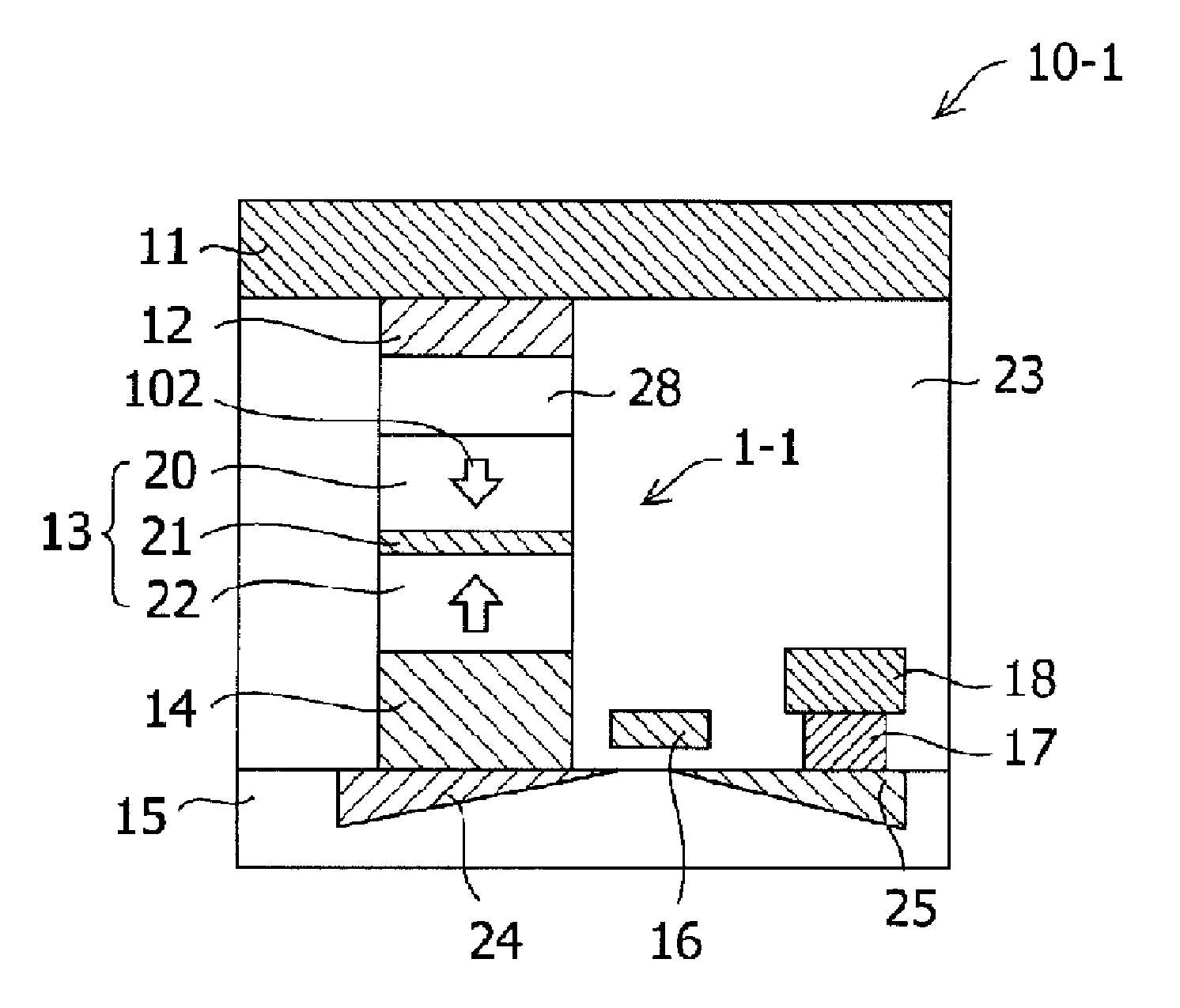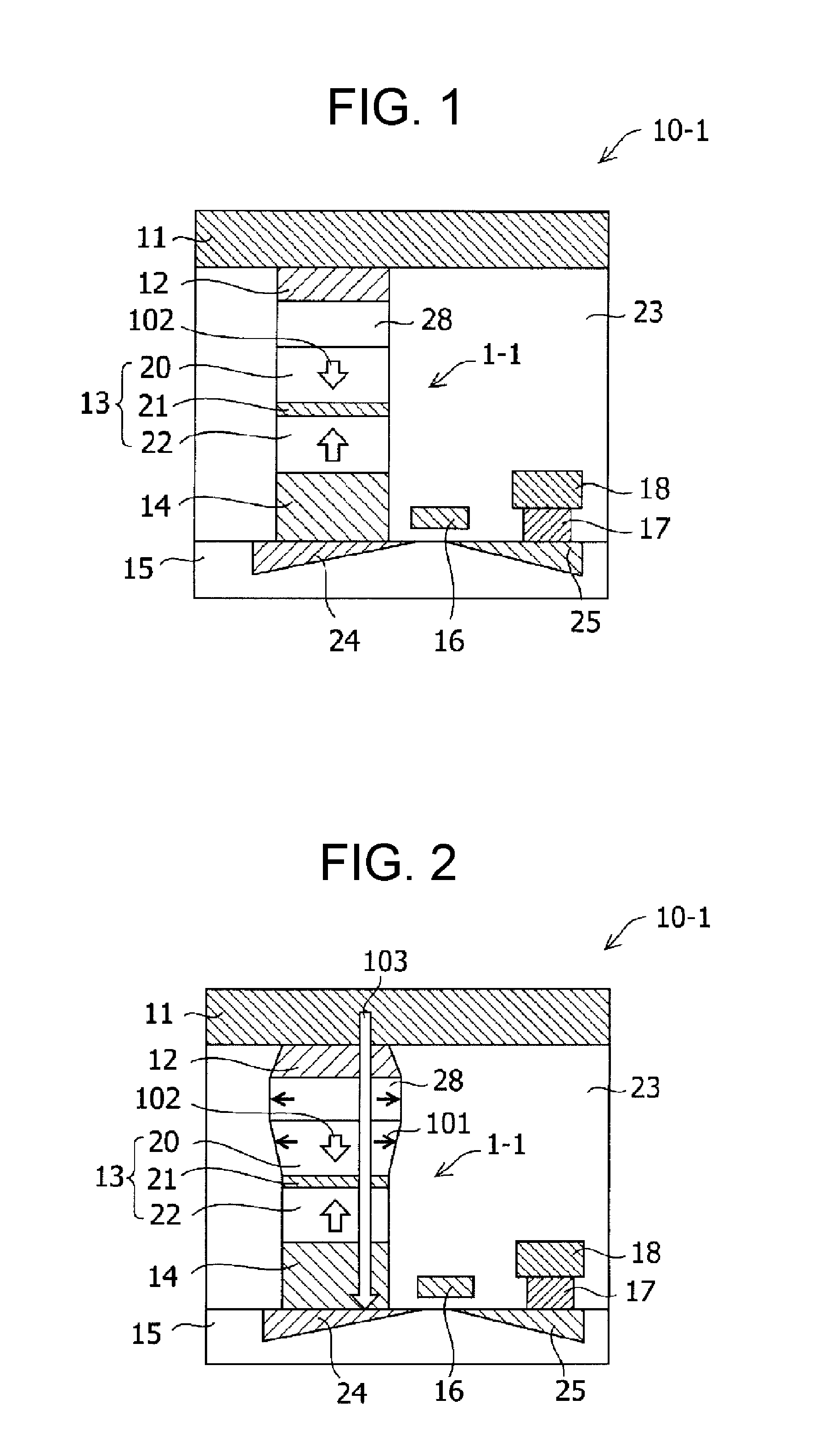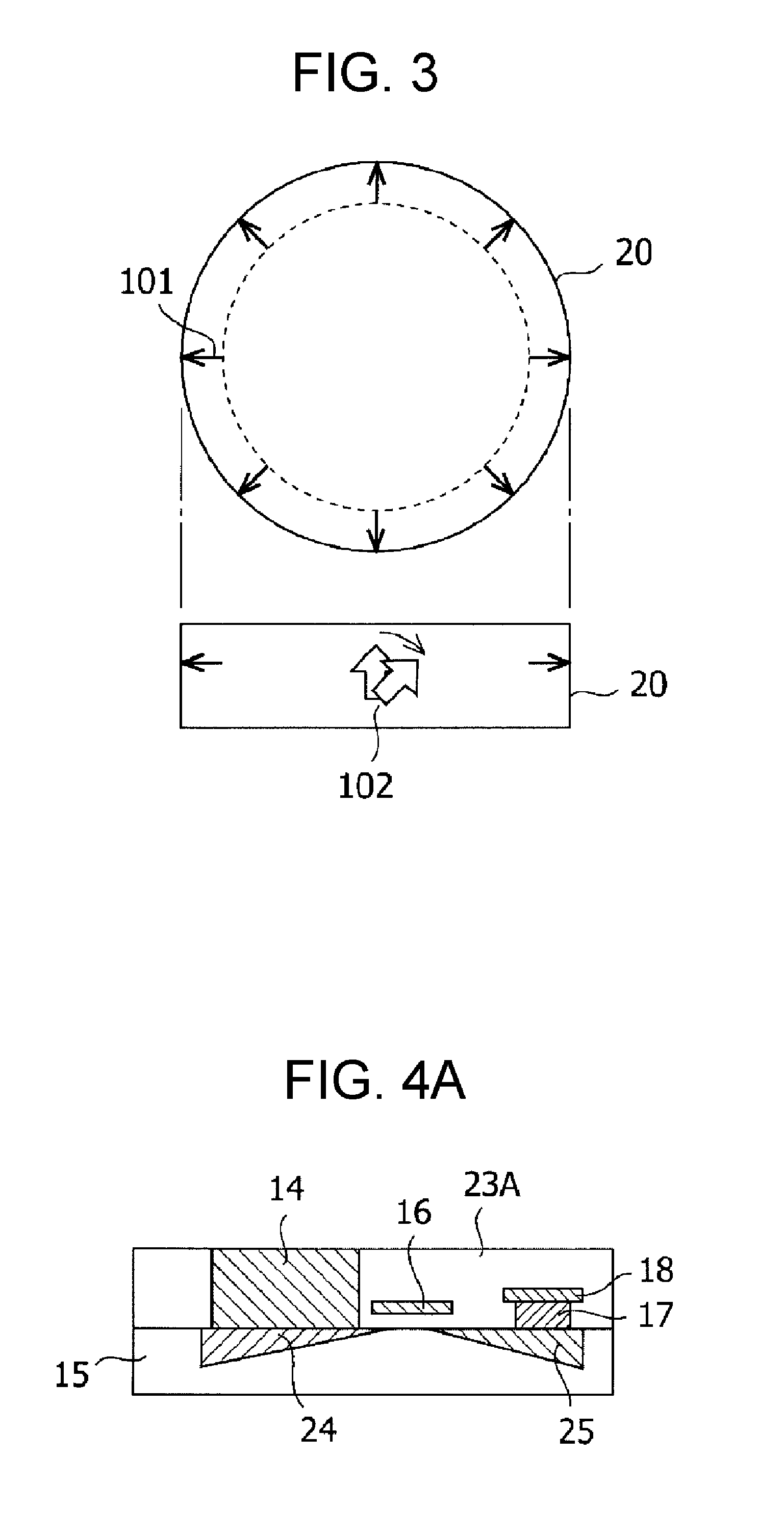Magnetic memory element and storage device using the same
a memory element and memory technology, applied in the field of magnetic memory elements, can solve the problems of high writing energy, low capacity mram is not suitable for replacing the dram technique, and large cell area, and achieve the effects of reducing the magnetic anisotropic energy, high thermal stability, and reducing the current required for writing
- Summary
- Abstract
- Description
- Claims
- Application Information
AI Technical Summary
Benefits of technology
Problems solved by technology
Method used
Image
Examples
first embodiment
[0064]FIG. 1 is an enlarged cross-sectional view illustrating a portion of a storage device 10-1 including a magnetic memory element 1-1. In FIGS. 1 and 2, the same components as those shown in FIG. 12 are denoted by the same reference numerals and a description thereof will not be repeated. The structure of the magnetic memory element 1-1 according to this embodiment is different from that of the magnetic memory element 1′ according to the related art shown in FIG. 12 in that a thermal expansion layer 28 is inserted between a storage layer 20 and an upper electrode 12. The principle of the reading and writing operations of the magnetic memory element 1-1 is the same as that of the reading and writing operations of the magnetic memory element 1′ according to the related art and thus a description thereof will not be repeated.
[0065]The magnetic memory element 1-1 including the thermal expansion layer 28 can reduce a writing current for the following reason. That is, the writing (STT)...
second embodiment
[0081]FIG. 6 is an enlarged cross-sectional view illustrating a portion of a storage device 10-2 including a magnetic memory element 1-2 according to a second embodiment. In FIG. 6, the same components as those shown in FIG. 1 are denoted by the same reference numerals and a description thereof will not be repeated.
[0082]The magnetic memory element 1-2 according to this embodiment uses in-plane magnetization films that are magnetized in the left-right direction in FIG. 6 as the storage layer 20 (second magnetic body) and the pinned layer 22 (first magnetic body). In addition, the magnetic memory element 1-2 includes a thermal contraction layer 29 instead of the thermal expansion layer 28 shown in FIG. 1.
[0083]As described above, the magnetic memory element 1-1 according to the first embodiment shown in FIG. 1 is strained by the thermal expansion layer 28 in the direction in which the cross-sectional area (a cross section parallel to the interface between the storage layer 20 and the...
third embodiment
[0089]FIG. 7 is an enlarged cross-sectional view illustrating a portion of a storage device 10-3 including a magnetic memory element 1-3 according to a third embodiment. In FIG. 7, the same components as those shown in FIG. 1 are denoted by the same reference numerals and a description thereof will not be repeated.
[0090]The structure of the magnetic memory element 1-3 according to this embodiment is different from that of the magnetic memory element 1-1 according to the first embodiment shown in FIG. 1 in that an expansion and contraction layer 30 is provided between the interlayer insulating film 23 and the thermal expansion layer 28. However, in this embodiment, the expansion and contraction layer 30 is also provided between the interlayer insulating film 23 and the storage layer 20.
[0091]In the magnetic memory element 1-1 according to the first embodiment, the thermal expansion layer 28 is thermally expanded by Joule heat generated due to a writing current. At that time, the ther...
PUM
 Login to View More
Login to View More Abstract
Description
Claims
Application Information
 Login to View More
Login to View More - R&D
- Intellectual Property
- Life Sciences
- Materials
- Tech Scout
- Unparalleled Data Quality
- Higher Quality Content
- 60% Fewer Hallucinations
Browse by: Latest US Patents, China's latest patents, Technical Efficacy Thesaurus, Application Domain, Technology Topic, Popular Technical Reports.
© 2025 PatSnap. All rights reserved.Legal|Privacy policy|Modern Slavery Act Transparency Statement|Sitemap|About US| Contact US: help@patsnap.com



